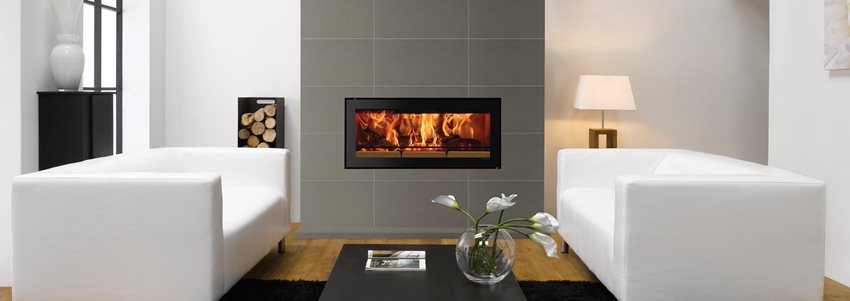
Key Differences in Wood Fireplaces Explained
When doing research for a new wood burning fireplace you may come across many different terms and it can be very confusing. Isn’t a fireplace just a fireplace? Sure, a freestanding wood heater and fireplace are very different but what the heck is an inbuilt? What is the difference between a decorative fireplace and an EPA certified fireplace? Or what about the difference between catalytic heaters vs non-catalytic heaters?
Not to worry we are here to help – below we explain what the difference between each type of wood fireplace (in plain English!) and explain some of the key technologies that help differentiate between models.
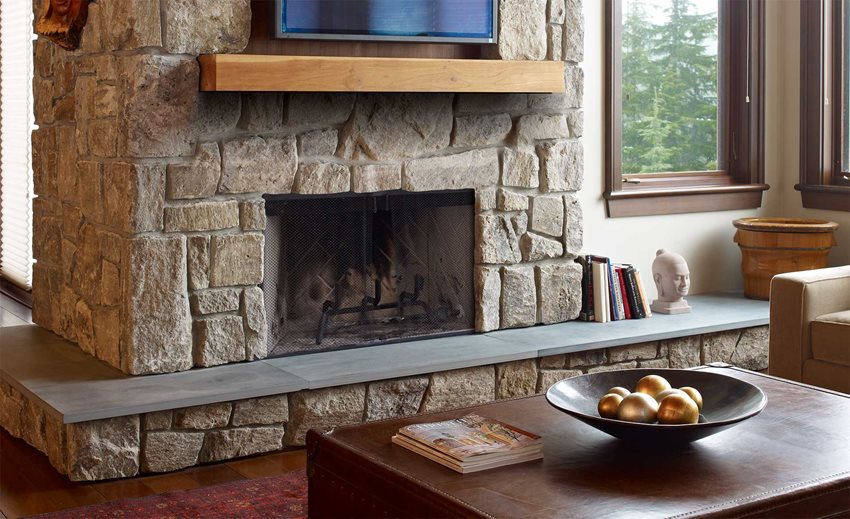
Open Masonry Fireplaces
Open masonry fireplaces are probably what comes to mind when you think of a wood fireplace. These fireplaces are open and usually made with some sort of brick, stone, or masonry. If your home was built prior to the 1980’s chances are you have an open masonry fireplace. Open fireplaces are highly inefficient for heating, produce lots of smoke and particulate matter, and can vent noxious gasses or smells into your home.

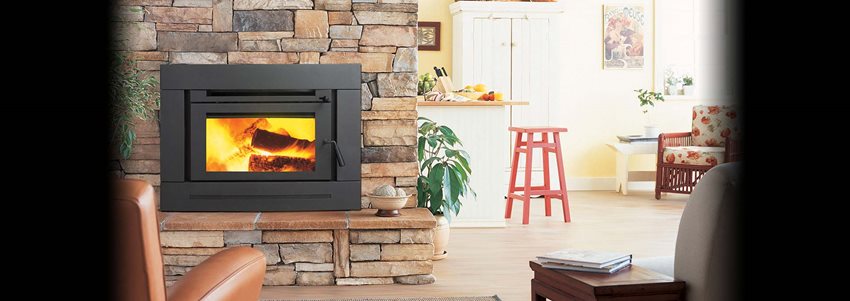
Wood Fireplace Inbuilts
Wood fireplace inbuilts are sealed fireboxes that are inserted or placed inside an existing masonry fireplace. They use the existing masonry as framing and the chimney to run venting – keeping installation costs low and fully utilizing existing structures.
Wood fireplace inbuiltsturn old inefficient open fireplaces into highly efficient heating systems. Wood inbuilts will typically be used with a blower to push the warm air even further into the home.
Wood inbuilts are perfect for quick and easy upgrades that can transform a room and homes heating capabilities with very minimal renovations required.
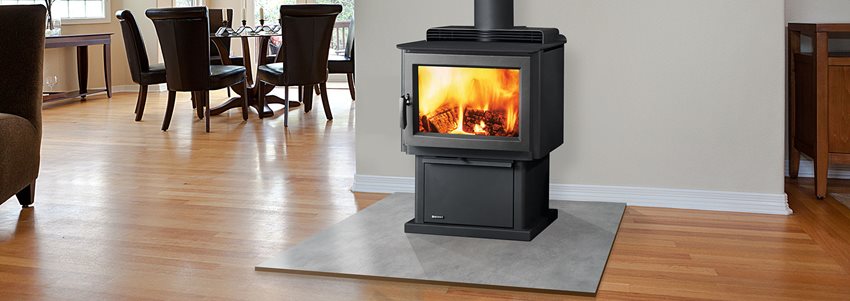
Wood Freestanding Heaters
Wood freestanding heaters are a standalone wood fireplace that can act as the sole heat source for many homes – even in the harshest climates. Freestanding wood heaters can produce very large amounts of heat and heat very large spaces.
Typically, wood heaters are installed according to manufacturer clearances and are required to be installed either on a concrete slab or hearth pad. Freestanding Wood heaters are vented vertically with double walled pipe that goes up and out of the home.
Freestanding Wood Heaters are perfect for large spaces, cabins or homes, or for places that do not have access to gas and may lose power frequently during the winter. Freestanding Wood Heaters have been around for hundreds of years and are truly a fantastic way to heat your entire home.
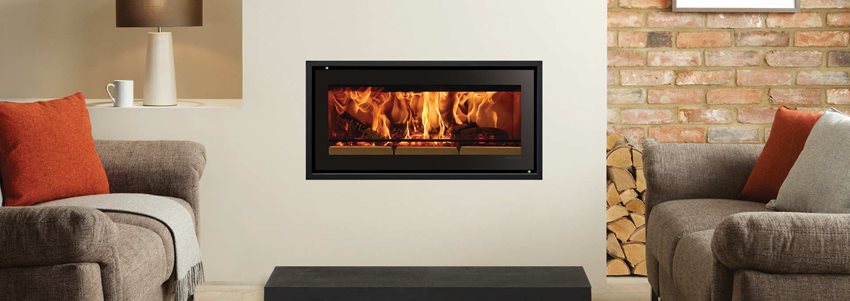
Wood Burning Fireplaces
Wood burning fireplaces are fireboxes that get framed into a wall (with the appropriate non-combustible material surroundings). They differ from open masonry fireplaces in the fact that they don’t require a chimney and instead use venting like freestanding heaters and fireplace inbuilts.
Wood fireplaces are perfect for new homes that want to add a fireplace without first needing to build a chimney or masonry fireplace. Today’s wood burning fireplaces are just as efficient and produce just as much heat as their wood freestanding counterparts, however their uses are more limited to new builds or large-scale renovations.
Recap of Fireplace Types:
OK, that was a lot, lets do a quick recap of the four main types of wood Fireplaces.
- Open Masonry Fireplaces – Open, inefficient wood fireplaces made of stone or brick typically found in older homes.
- Wood Fireplace Inbuilts– Sealed fireboxes that are inserted inside existing masonry fireplaces to increase heating efficiency
- Wood Freestanding Heaters – High-capacity freestanding fireplaces that are perfect for heating large areas or homes in extra cold/remote areas
- Wood Burning Fireplaces – Fireplaces for new builds and renovations that do not require existing masonry or chimney.
Types of Wood Burning Technology
Regular Combustion (Single Burn)
Regular combustion happens in open fireplaces – including open masonry fireplaces, decorative fireplaces, and campfires. In this process the wood burns and releases gasses and particulate matter into the atmosphere and travel up the venting/chimney. The result is a single burn.
These units are highly inefficient, meaning the wood burns very quickly, lots of heat is wasted and there is a high output of particulate matter and smoke.
Catalytic (Double Burn)
Catalytic wood units implement a secondary burn using a catalytic combustor. After the initial burn the gasses and particulate matter released are funneled through a catalyst. This catalyst acts as another ignition source and re-ignites these gasses and particulates. The result is a secondary burn that removes a significant portion of gasses and particulates.Catalytic wood units will burn for a long time at a more stable temperature than their non-catalytic counterparts.
Non-Catalytic (Double Burn)
Non-catalytic units also implement a secondary burn, however instead of using a catalytic combustor they utilize super-heated air that is circulated through air tubes and mixes with the particulate matter and gasses. Once the super-heated oxygen is mixed with these gasses in the firebox it causes them to re-ignite – causing a secondary burn. Again, this results in significantly reduced emissions as the gasses and particulates are being burned again and only the by-products of the secondary burn are released.
These units do burn very cleanly; however, they tend to burn hotter, quicker, and for less duration than a comparably sized catalytic model.
Hybrid (Triple Burn)
A hybrid unit utilizes both technologies to create the super-efficient burns that utilize every possible ounce of energy available in each log. After initial combustion the gasses and particulate matter is mixed with superheated air to undergo secondary combustion. After the secondary combustion the remaining gasses and particulates are funneled through a catalytic combustor and undergo a third and final combustion. As a result, these units produce immense amounts of heat, are hyper-efficient, and offer the longest burn times of any units.
These hybrid units are not as common as catalytic and non-catalytic models, however for serious wood burners or for people in extremely cold climates, this is the technology for you.
Recap of Combustion Types:
- Regular Combustion (Single Burn) – Traditional open fires such as campfires or open-masonry fires – produce lots of particulates and are highly inefficient.
- Catalytic (Double Burn) – Reburns gasses and particulate matter with a catalytic combustor for a more efficient and clean burn.
- Non-Catalytic (Double Burn) - Reburns gasses and particulate matter by mixing with super-heated air for a more efficient and clean burn.
- Hybrid (Triple Burn) – Reburns gasses and particulates two times, once with super-heated air and once with a catalytic combustor for highly efficient and very clean burns.
You May Also Like…
Tips for Properly Seasoning your Wood
Burn Times Explained: How they work & how to maximize yours